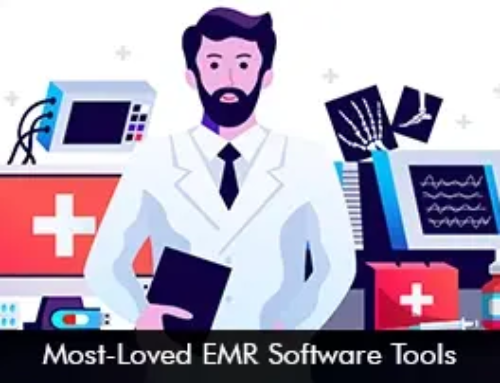EHR software is the backbone of modern healthcare. It has successfully revolutionized the way patient information is captured, stored, and utilized. However, to harness the full potential of Electronic Health Record (EHR) software, healthcare providers must follow best practices for their implementation and utilization.
Define Clear Objectives
Before embarking on an EHR implementation journey, it’s essential to define clear and achievable objectives. Determine what you aim to accomplish with the software, whether it’s improving patient care, enhancing workflow efficiency, reducing errors, or meeting regulatory requirements. These objectives will guide the implementation process.
Involve Stakeholders
Engage all relevant stakeholders, including healthcare providers, nurses, administrative staff, and IT personnel, in the planning and implementation process. Involving end-users from the beginning helps identify specific needs, concerns, and preferences, ensuring the EHR system aligns with the practice’s workflow and goals.
Choose the Right EHR Software
Selecting the most suitable EHR software for your practice is paramount. Look for a system that aligns with your defined objectives, supports integration with other systems, and is user-friendly. Ensure the software is customizable to fit your practice’s unique needs.
Workflow Assessment
Conduct a thorough assessment of your current workflows to understand how information is collected, stored, and shared within your practice. Identifying existing processes helps tailor the EHR system to streamline and optimize these workflows.
Data Migration Planning When Switching EHR Software
Transferring existing patient records into the new EHR system is a critical aspect of implementation. Plan for data migration meticulously, ensuring that all patient information is accurately transferred without errors. Data migration can be a complex process, so working with experienced professionals is often advisable.
Customization
Customize the EHR system to align with your practice’s specific needs. This may involve tailoring templates, workflows, and alerts to match your unique requirements. A well-customized system enhances user satisfaction and efficiency.
Comprehensive Training
Invest in comprehensive training programs for all staff members who will use the EHR system. Adequate training ensures that employees are comfortable with the system’s functionalities and can use it effectively in their daily tasks.
Data Security
Data security in healthcare is non-negotiable. Ensure that the EHR system complies with industry standards and regulations, such as HIPAA (Health Insurance Portability and Accountability Act). Implement robust access controls and encryption to protect patient data.
Testing and Quality Assurance
Before launching the EHR system for day-to-day use, conduct rigorous testing to identify and resolve any issues. This may involve performance testing, data accuracy checks, and usability assessments. Testing ensures that the system works as intended and doesn’t disrupt your practice.
Contingency Planning
Prepare for potential setbacks and issues that may arise during and after EHR implementation. Develop contingency plans to address unexpected challenges, whether they are related to data migration, system downtime, or user resistance.
Regular Evaluation of EHR Software
Post-implementation, continuously monitor and evaluate the EHR system’s performance. Gather feedback from users and assess whether your objectives are being met. Regular evaluations help identify areas for improvement and optimization.
EHR Software and a Culture of Change
EHR implementation often involves a significant cultural shift within a healthcare practice. Embrace this change by fostering a culture that values continuous improvement, adaptation, and learning. Encourage staff to be open to new technologies and processes.
Support and Maintenance
Allocate resources for ongoing support and maintenance of the EHR system. This includes addressing software updates, technical issues, and staff inquiries. Having a dedicated support team or a partnership with the software provider is valuable.
Patient Involvement Through EHR Software Patient Portals
Incorporate patient engagement into the EHR implementation process. Educate patients on how the system benefits them, such as improved access to their medical records and more efficient communication with healthcare providers. Encourage their participation and feedback.
Measure Outcomes
Regularly measure the outcomes of EHR implementation. Are you achieving your defined objectives? Are there measurable improvements in patient care, administrative efficiency, or data accuracy? Continuous outcome measurement helps gauge the impact of the system on your practice’s performance.








